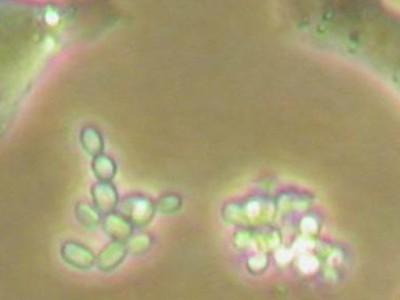芝加哥 – 据7月13日刊《美国医学会杂志》上的一则研究披露,与标准的诊断程序相比,基于某种诊断程序(包括从肺中获取液体样本并对这些样本进行培养)而接受治疗的囊性纤维化病的婴儿,在他们5岁的时候,其肺部发生损伤性感染或结构性损伤的患病率并没有降低。
囊性纤维化病患儿发生的早期肺部感染,尤其是绿脓杆菌感染与患病和死亡风险的增加有关。在无排痰(无法咳出痰液)囊性纤维化病患者中精确地诊断绿脓杆菌感染是非常困难的。根据文章的背景资料,当囊性纤维化病幼儿无法提供痰液时,支气管肺泡灌洗(BAL)是一种替代性的诊断工具。但这种诊断方法具有临床裨益的证据是缺乏的。支气管肺泡灌洗是一种内科诊疗程序,即将一根支气管镜通过口腔或鼻腔进入到肺部,并对一小部分肺灌注液体然后收集该液体以进行检查。
澳大利亚布里斯班昆士兰大学的皇家儿童医院的Claire E. Wainwright, M.B.B.S., M.D.及其同事开展了一项研究,旨在检查在囊性纤维化病患儿的头5年中由BAL指导的对肺部疾病的恶化的治疗是否可降低绿脓杆菌的感染和患儿5岁时的结构性肺损伤。澳大利亚囊性纤维化病支气管肺泡灌洗(ACFBAL)随机对照试验所纳入的是来自8个澳大利亚囊性纤维化病治疗中心的通过新生儿筛检计划所诊断的囊性纤维化病婴儿。对受试者的招募是在1999年6月至2005年4月间进行的,而该研究是在2009年12月31日结束的。受试者所接受的是直至5岁的BAL-指导的治疗(n = 84)或是标准化的治疗(n = 86,标准化治疗是指基于口咽部培养所进行的治疗)。BAL-指导的治疗组是在6个月大之前的时候接受BAL的(如果情况良好的话)或是在肺部病情恶化而住院时(如果口咽部样本中发现了绿脓杆菌)接受BAL,以及在绿脓杆菌根治术后接受BAL的。根据BAL或口咽部培养的结果而给患儿施予治疗。在5岁时的初步结果有BAL培养中的绿脓杆菌的发生率(BAL-指导的治疗组及标准治疗组)及在高分辨率胸部CT扫描上的囊性纤维化病的计算机断层扫描(CF-CT)总评分(作为最大评分的一个百分比)。
在267名通过新生儿筛检而被诊断患有囊性纤维化病的婴儿中,有170人被纳入到此研究之中并接受随机分组,有157人完成了这一研究。在这两组中所发现的初步结果没有显示两组间的数据具有统计学意义上的差异。由BAL培养所诊断的绿脓杆菌感染在BAL-指导的治疗组中为8/79[10%] vs. 标准治疗组的9/76[12%] 。对CF-CT总分的结果来说,这两组的数据皆来自76个患儿(90%)。BAL-指导的治疗和标准治疗组的平均CF-CT总分分别为3.0%和2.8%。

肺部的囊性纤维化图
生物探索推荐英文原文
Invasive diagnostic procedure for children with cystic fibrosis does not improve outcomes
CHICAGO – Compared to a standard diagnostic procedure, infants with cystic fibrosis who received treatment based on a diagnostic procedure involving obtaining and culturing fluid samples from the lungs did not have a lower prevalence of lung-damaging infection or structural lung injury at 5 years of age, according to a study in the July 13 issue of JAMA.
Early pulmonary infection in children with cystic fibrosis, particularly with Pseudomonas aeruginosa, is associated with an increased risk of illness and death. Diagnosing P aeruginosa infection accurately in nonexpectorating (cannot discharge sputum) patients with cystic fibrosis can be difficult. Bronchoalveolar lavage (BAL) is an alternative diagnostic tool used when young children with cystic fibrosis cannot provide sputum, but evidence for its clinical benefit is lacking, according to background information in the article. Bronchoalveolar lavage is a medical procedure in which a bronchoscope is passed through the mouth or nose into the lungs and fluid is instilled into a small part of the lung and then recollected for examination.
Claire E. Wainwright, M.B.B.S., M.D., of the Royal Children's Hospital, University of Queensland, Brisbane, Australia, and colleagues conducted a study to examine whether BAL-directed therapy for pulmonary exacerbations in the first 5 years of life in infants with cystic fibrosis reduced P aeruginosa infection and structural lung injury at age 5. The Australasian Cystic Fibrosis Bronchoalveolar Lavage (ACFBAL) randomized controlled trial included infants diagnosed with cystic fibrosis through newborn screening programs in 8 Australasian cystic fibrosis centers. Recruitment occurred between June 1999 and April 2005, with the study ending on December 31, 2009. Participants received BAL-directed (n = 84) or standard (n = 86) therapy (based on oropharyngeal [pertaining to the mouth and the pharynx] cultures) until age 5 years. The BAL-directed therapy group underwent BAL before age 6 months when well, when hospitalized for pulmonary exacerbations, if P aeruginosa was detected in oropharyngeal specimens, and after P aeruginosa eradication therapy. Treatment was prescribed according to BAL or oropharyngeal culture results. Primary outcomes at age 5 years were prevalence of P aeruginosa on BAL cultures in both the BAL-directed and standard therapy groups and total cystic fibrosis computed tomography (CF-CT) score (as a percentage of the maximum score) on high-resolution chest CT scan.
Of 267 infants diagnosed with cystic fibrosis following newborn screening, 170 were enrolled and randomized and 157 completed the study. No statistically significant between-group differences for either of the primary outcomes were detected. P aeruginosa infection diagnosed by BAL culture was detected in 8/79 [10 percent] in the BAL-directed therapy group vs. 9/76 [12 percent] in the standard therapy group. For the outcome of total CF-CT score, data were obtained in 76 children (90 percent) in both study groups. The average total CF-CT scores for the BAL-directed therapy and standard therapy groups were 3.0 percent and 2.8 percent, respectively.







